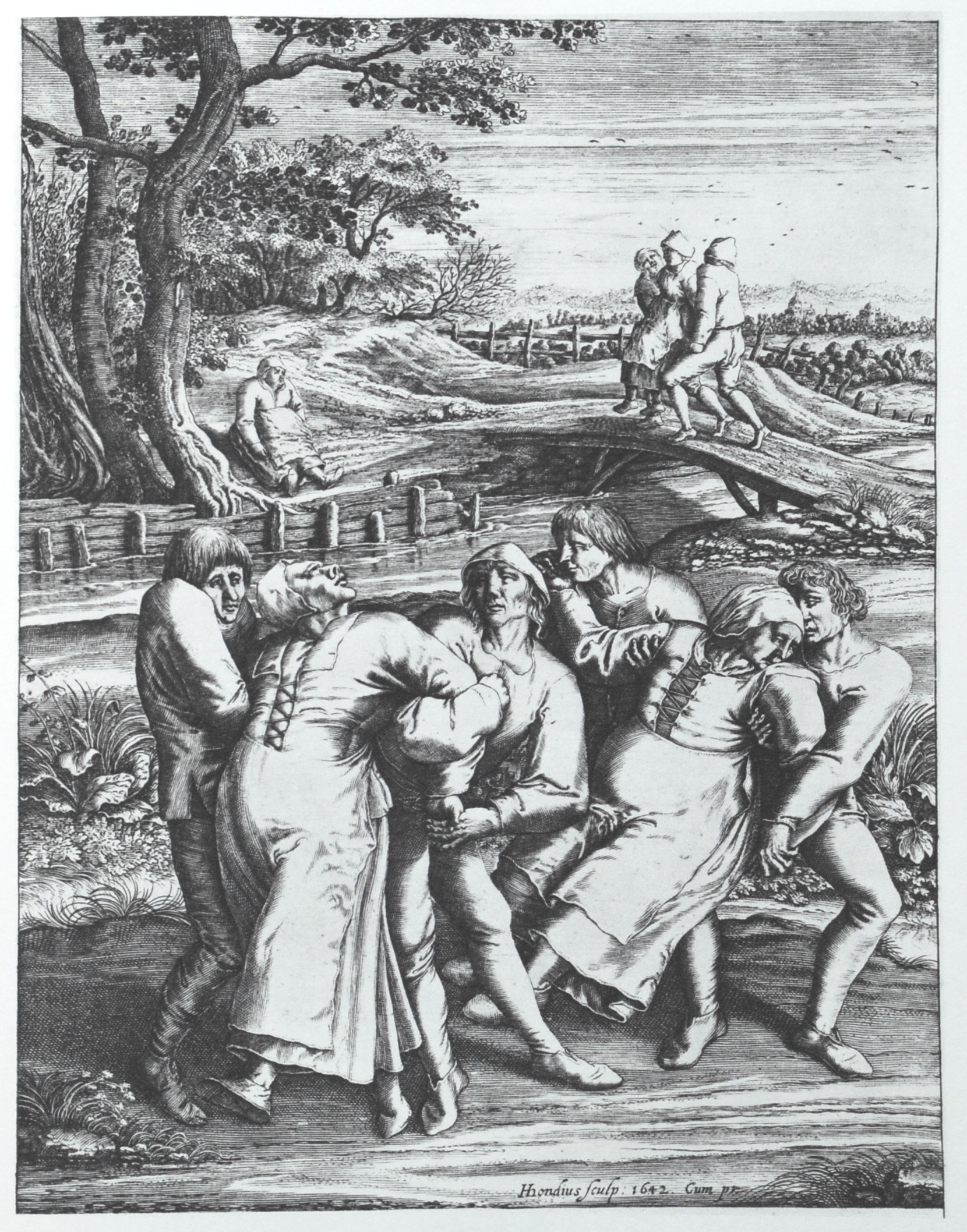A warm July morning in 1518 marked the beginning of one of history’s most bizarre and terrifying events in Strasbourg. Frau Troffea stepped into the cobblestone streets and began to dance. Her movements were not those of celebration but rather of someone possessed by an unstoppable force.
Days passed, yet Frau Troffea continued her frenzied dance until exhaustion forced her body to collapse. More disturbing still, within a week, 30 other residents found themselves caught in the same inexplicable dancing trance. Their feet moved against their will, their bodies swayed without control, and their minds seemed locked in a terrifying dance marathon.

Historical illustration of the dancing plague – Credit: The Public Domain Review
The city officials of Strasbourg made a decision that would prove catastrophic. Rather than trying to stop the dancing, they encouraged it. They constructed wooden stages throughout the city and hired musicians to play continuous music. This misguided solution only fueled the epidemic, causing it to spread like wildfire through the medieval streets.

Medieval depiction of the dancing plague victims – Credit: Wikipedia
By August, the dancing plague had claimed over 400 victims. The dancers moved until their feet were bloodied, their bodies bruised, and their minds delirious with exhaustion. Some danced until their ribs cracked, while others succumbed to heart attacks and strokes. The streets of Strasbourg became a macabre dance floor where life and death performed their own twisted waltz.
The dancing plague occurred during a time of severe hardship in Strasbourg. Failed harvests had led to widespread famine, and diseases like smallpox ravaged the population. Modern historians, like John Waller, suggest this combination of stress and social crisis created the perfect conditions for a mass psychogenic illness.
The medieval belief in St. Vitus, the patron saint of dancers, added another layer to this peculiar outbreak. Local folklore warned that failing to honor St. Vitus would result in a dancing curse. This deeply ingrained fear, combined with the overwhelming social pressures, might explain why the affliction took the form of unstoppable dancing.
The dancing plague finally began to subside in early September 1518, leaving behind a transformed city. This inexplicable event stands as one of history’s most documented cases of mass hysteria, reminding us how collective fear and social crisis can manifest in extraordinary ways. The dancing plague of 1518 remains a haunting testament to the mysterious ways human minds and bodies can respond to extreme societal pressure.
References:
The Public Domain Review – The Dancing Plague of 1518 – link
Wikipedia – Dancing plague of 1518 – link
Categories: Do you know, Historical Mysteries, Mass Hysteria, Medieval History, Urban Legends
Tags: Dancing Plague, epidemic, Historical Mysteries, Mass Hysteria, Medieval History, social crisis, St. Vitus, Strasbourg
Religion: Christianity
Country of Origin: France, Germany
Topic: Historical Mystery
Ethnicity: European


